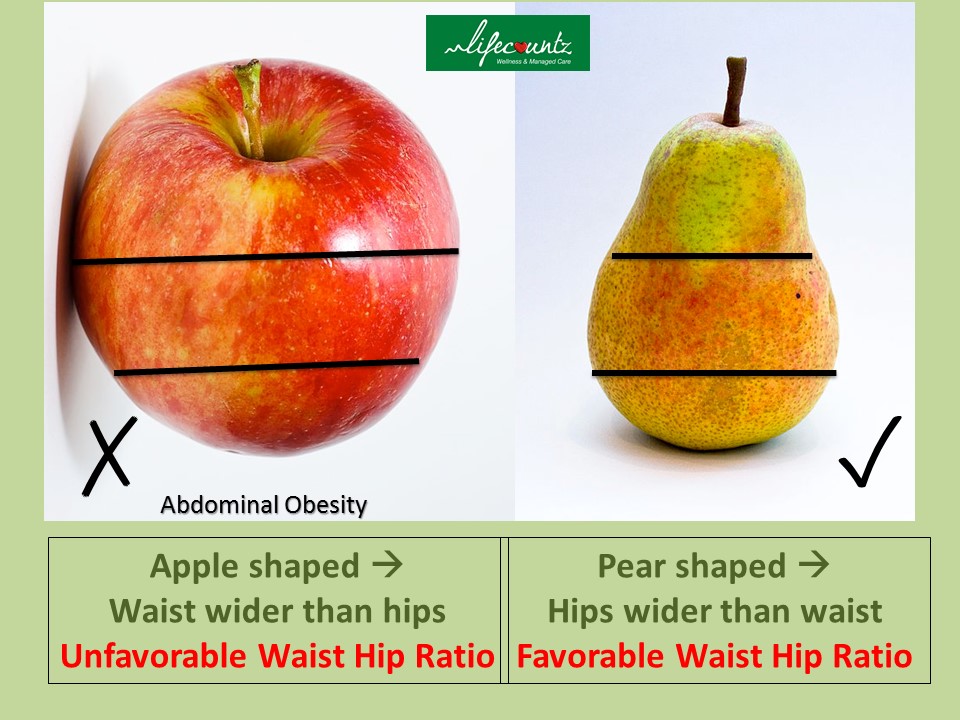A new study had discovered that people with more fats on their abdomen face more risk of developing hypertension, heart attacks etc than the ones who are just obese overall.
At the risk of repetition, we must mention that excess body weight has serious consequences for health. Overweight and excess fat deposition is responsible for high levels of LDL (“bad”) cholesterol and triglycerides; it also lowers HDL (“good”) cholesterol. It increases the possibility of getting diabetes by impairing the body’s response to insulin. To be brief, it contributes to major causes of sudden death and morbidity, including heart attacks, strokes, high BP, diabetes, osteoarthritis, cancer and even mood disorders (being inferior).

Now it has been confirmed that fat around the abdomen is a bigger risk of all of the above than fat deposited all over/ at other parts of the body.
So what makes abdominal obesity a bigger risk?
Well, that is not exactly known. But we must understand abdominal fat is divided into two:
- Fat under the skin – this behaves like fat anywhere else
- Fat inside the abdomen, surrounding important organs like liver, kidneys, intestines, pancreas etc and this visceral fat does the harm! This visceral fat is linked to hyper activity of the body’s stress response mechanisms, which in turn raises blood pressure, blood sugar levels and risk of heart disease.
How do I measure me abdominal fat?
A simple method is to calculate your waist-to-hip ratio. With your abdomen relaxed (not pulled in), measure your waist at the navel; then measure your hips at their widest point. Waist Hip Ratio (WHR) is Waist (in inches) / Hips (in inches). Click here for your WHR
How do you understand the risk?
The chance of suffering a heart attack or stroke increases steadily with a man’s WHR rising above 0.95; for women, risk begins to increase above 0.85.
Although WHR is a very useful tool but lately several experts have begun using just the waist circumference since it involves one measurement instead of two, it’s much more accurate. Guideline on what does it imply?
What does your waist circumference imply? |
||
| Men | Women | |
| Low risk | 37 inches and below | 31.5 inches and below |
| Intermediate risk | 37.1–39.9 inches | 31.6–34.9 inches |
| High risk | 40 inches and above | 35 inches and above |
Visceral fat is very stubborn and does not easily burn. In addition to low calorie diet and regular, effective aerobic exercise viz. Running, walking, swimming, cycling or any other sports which helps you to produce sweat, we must spend time doing exercises for abdominal muscles.
Six-pack is not the goal; lower WHR is!
Dr Chander Asrani, is a post-graduate in Family Medicine. He has over 37 years in family practice and has been offering wellness and disease management services to corporates. He is soon to launch virtual clinics. He writes on various subjects of wellness; learning to live with chronic ailments and stress. Know more about him at about.me/drasrani.



Please comment with your real name using good manners.